For working professionals
For fresh graduates
- Study abroad
More
- Executive Doctor of Business Administration from SSBM
- Doctorate in Business Administration by Edgewood University
- Doctorate of Business Administration (DBA) from ESGCI, Paris
- Doctor of Business Administration From Golden Gate University
- Doctor of Business Administration from Rushford Business School, Switzerland
- Post Graduate Certificate in Data Science & AI (Executive)
- Gen AI Foundations Certificate Program from Microsoft
- Gen AI Mastery Certificate for Data Analysis
- Gen AI Mastery Certificate for Software Development
- Gen AI Mastery Certificate for Managerial Excellence
- Gen AI Mastery Certificate for Content Creation
- Post Graduate Certificate in Product Management from Duke CE
- Human Resource Analytics Course from IIM-K
- Directorship & Board Advisory Certification
- Gen AI Foundations Certificate Program from Microsoft
- CSM® Certification Training
- CSPO® Certification Training
- PMP® Certification Training
- SAFe® 6.0 Product Owner Product Manager (POPM) Certification
- Post Graduate Certificate in Product Management from Duke CE
- Professional Certificate Program in Cloud Computing and DevOps
- Python Programming Course
- Executive Post Graduate Programme in Software Dev. - Full Stack
- AWS Solutions Architect Training
- AWS Cloud Practitioner Essentials
- AWS Technical Essentials
- The U & AI GenAI Certificate Program from Microsoft
5. Array in C
13. Boolean in C
18. Operators in C
33. Comments in C
38. Constants in C
41. Data Types in C
49. Double In C
58. For Loop in C
60. Functions in C
70. Identifiers in C
81. Linked list in C
83. Macros in C
86. Nested Loop in C
97. Pseudo-Code In C
100. Recursion in C
103. Square Root in C
104. Stack in C
106. Static function in C
107. Stdio.h in C
108. Storage Classes in C
109. strcat() in C
110. Strcmp in C
111. Strcpy in C
114. String Length in C
115. String Pointer in C
116. strlen() in C
117. Structures in C
119. Switch Case in C
120. C Ternary Operator
121. Tokens in C
125. Type Casting in C
126. Types of Error in C
127. Unary Operator in C
128. Use of C Language
C Language Download and Installation Steps for Beginners
Debugging complex C programs often starts with the basics—setting up the right environment. If your system lacks the right tools, you'll hit errors before even writing a single line of code. This is where the C Language Download process becomes essential. Whether you’re compiling algorithms or working with arrays of structures, you need a compiler and an editor that work flawlessly together. Let's walk through the practical steps to get your system ready for C development.
This article will delve deep into detailed instructions to install C Environment, including where the software can be downloaded, links and steps, and screenshots to help you further.
Explore Online Software Development Courses from top universities.
C Language Download - an Overview
To run C programs, your system needs a C compiler and a code editor. Begin by choosing a C compiler that fits your goals. Popular options include GCC, MinGW, and LCC. These tools convert your C code into machine-readable instructions.
Next, install a text editor with C syntax highlighting. Some good choices are Notepad++, Sublime Text, and TextPad. You can also choose an IDE like Code::Blocks or Dev C++, which combines the editor and compiler in one tool.
Finally, configure your system’s PATH variable so it can locate the compiler when needed. Once everything is in place, write your code with a .c extension and compile it using your installed compiler.
Must Explore: Introduction to C Tutorial
The process involves the following key steps:
- Selecting a C Compiler: Choose a C compiler that suits your requirements. Popular choices include MinGW, GCC, and LCC. These compilers translate your C code into machine-readable instructions. More in-depth information, explore the C Compiler for Mac and C Compiler for Windows articles!
- Choosing a Text Editor: Select a text editor that supports C syntax highlighting and provides a comfortable coding environment. Notable options include TextPad, Notepad++, and Sublime Text.
- Setting up the Environment: Configure the environment variables on your Windows system to include the path to the C compiler. This allows the system to locate and use the compiler whenever needed.
- Writing a C Program: Use your text editor to write your C code. Remember to save the file with a .c extension, indicating that it contains C source code.
- Compiling the Program: Open a command prompt or terminal window, navigate to the directory where your C program is saved, and execute the compilation command. The compiler will transform your C code into an executable file that can be run on your system.
Alternatively, you can opt for an Integrated Development Environment (IDE) that combines a text editor and compiler into a single software package. IDEs such as Code::Blocks, Dev C++, and Turbo C++ offer a more streamlined and user-friendly coding experience.
C Environment Setup
To write and run C programs on a Windows computer, you need two essential tools: a text editor for coding and a C compiler for compiling the code into an executable format. Here's a detailed explanation of setting up these components in the C environment:
Text Editor:
A text editor is where you write your C program's source code, which is saved with a .c extension. While Windows includes a basic text editor like Notepad, more feature-rich options are available. Some popular text editors for C programming include Vim (which works on both Windows and Linux), Textpad, Notepad++, and Sublime Text. You can choose the text editor that suits your preferences and requirements.
Setting Up a Text Editor:
- Choose a text editor suitable for C programming, such as Notepad++, Sublime Text, or another preferred editor.
- Visit the official website of the chosen text editor and download the installation package.
- Run the downloaded installer and follow the installation instructions provided.
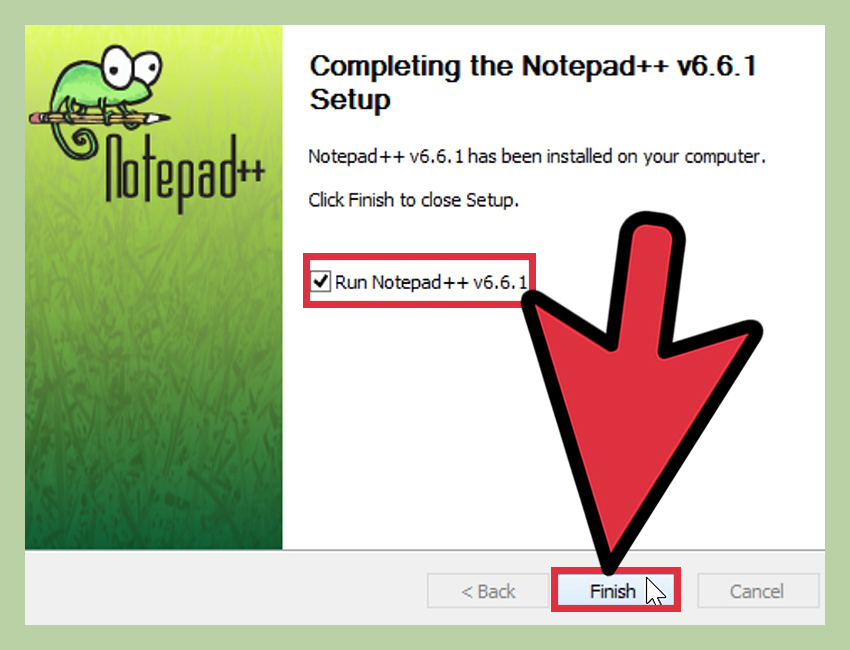
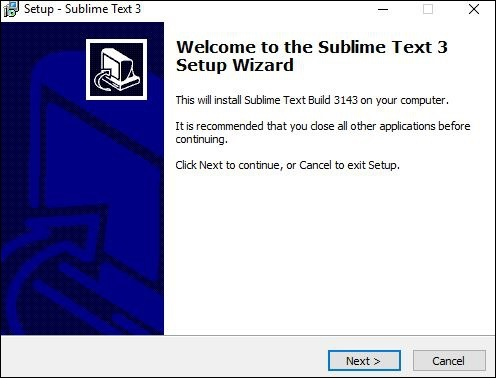
C Compiler:
The C compiler converts your source code into executable code that the computer can understand and execute. Various C compilers, such as GCC (GNU Compiler Collection), Intel C++ Compiler, Clang (by Apache), MinGW, and LCC, are available. GCC is widely used among these options and supports C and C++ languages. Most C compilers available on the market can compile C++ code as well.
Downloading and Installing the C Compiler:
- Determine the C compiler that suits your needs, such as GCC.
- Visit the official website of the compiler (e.g., the GNU GCC website).
- Download the appropriate installation package for your Windows system.
- Run the downloaded installer and follow the installation instructions provided by the compiler's documentation.
- Once the installation is complete, ensure the compiler's binary files (executable files) are added to the system's PATH environment variable. This step allows the system to locate the compiler when executing commands.
After installing the C compiler and a suitable text editor, you're ready to start. Open the editor, write your C code, and save it with a .c extension. Next, launch Command Prompt or Terminal. Navigate to your project’s folder. Use the appropriate compiler command to compile and execute your code. This setup enables you to write, build, and run C programs seamlessly on your Windows system.
Also explore: Features of C Language
C Language Download for Windows 10 and Windows 7
Downloading and setting up the C language on Windows 10 is straightforward. Here's a step-by-step guide to help you get started:
Step 1: Choose a C Compiler:
Select a C compiler that suits your needs. In this guide, we'll use MinGW as an example, a popular choice for Windows systems. MinGW is a port of the GNU Compiler Collection (GCC) and provides a collection of tools for C development.
Step 2: Download and Install MinGW:
Visit the MinGW website and navigate to the Downloads section. Download the installer for the latest stable release suitable for your Windows 10 (32-bit or 64-bit).

Once downloaded, run the installer and follow the on-screen instructions. You will be prompted to select the components to install during the installation. Ensure that you select the C language components for installation.
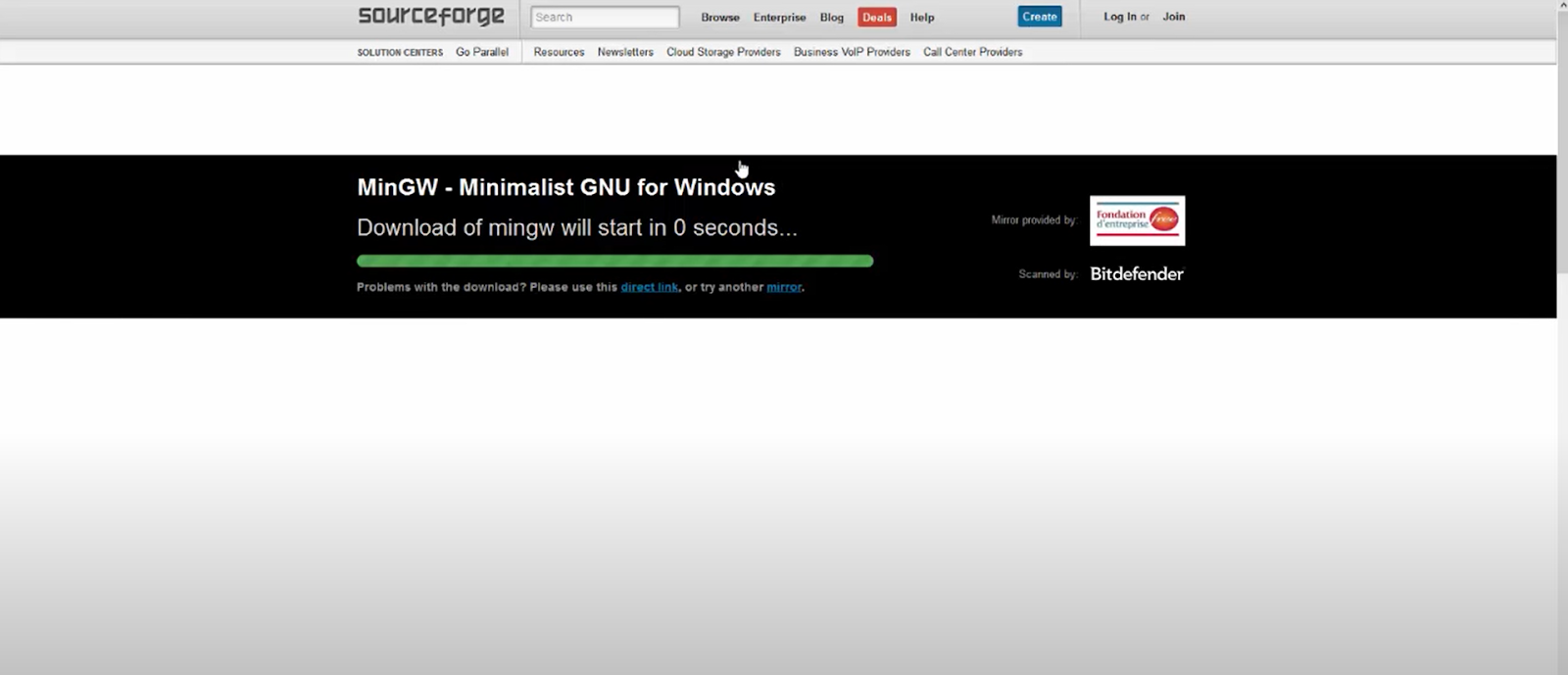

Step 3: Configure Environment Variables:
To enable your system to find the MinGW compiler, add its location to the system's PATH environment variable. Follow these steps:
- Right-click on the Start menu and select "System" or "System Properties."
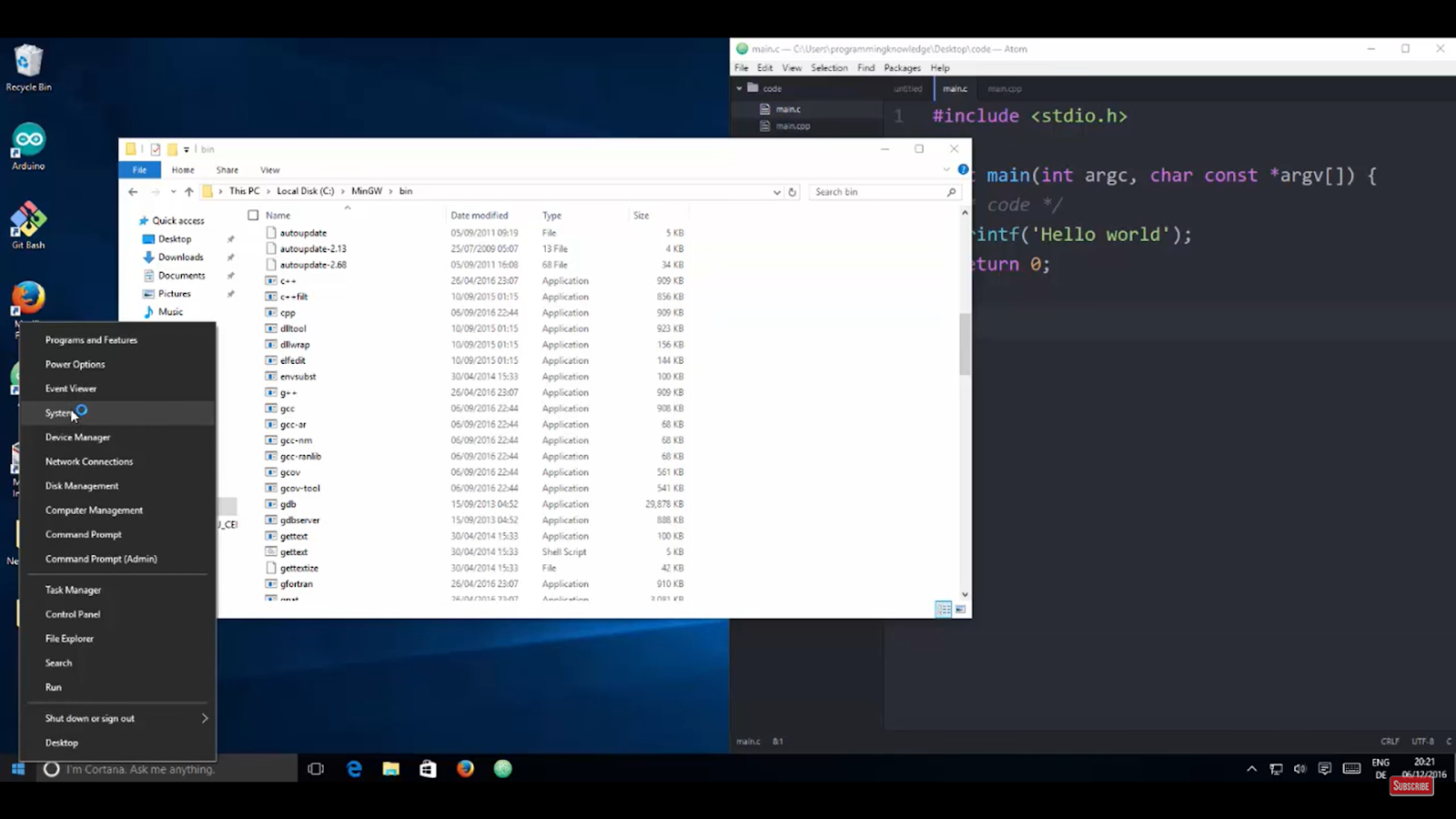
- Click "Advanced system settings" in the System window on the left.
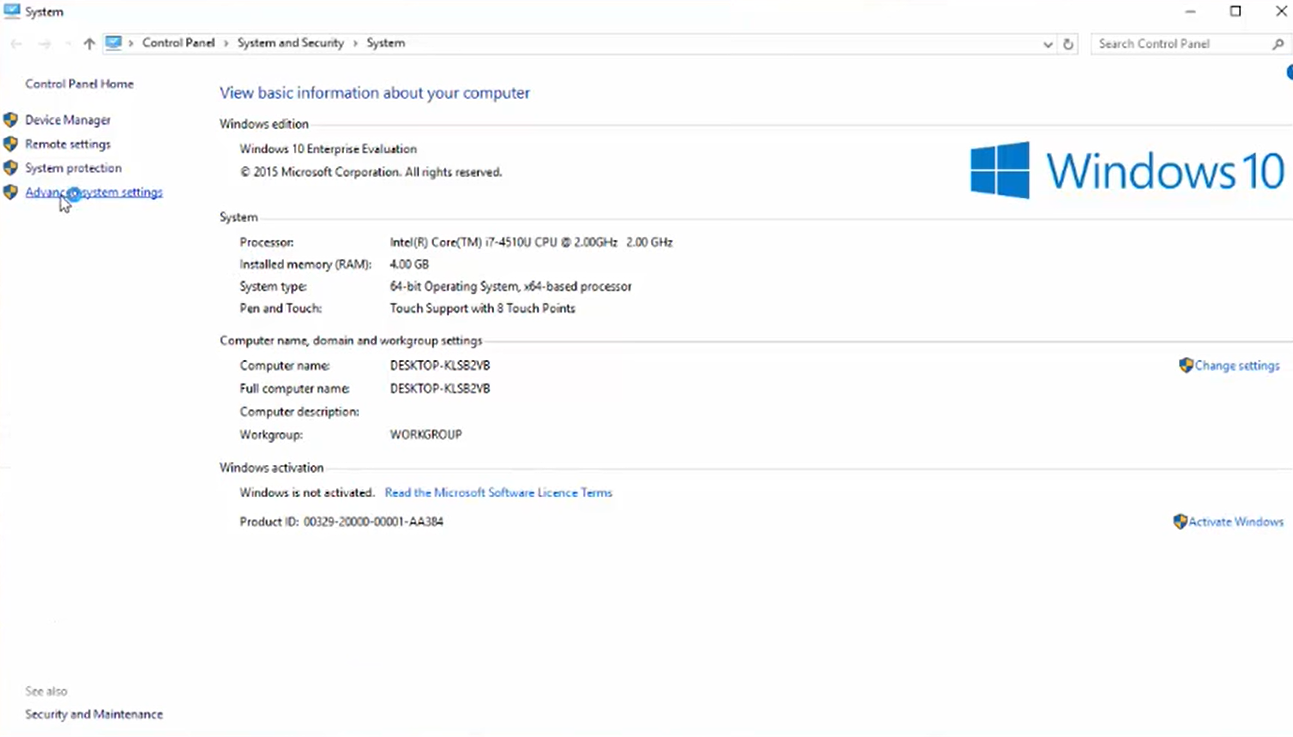
- In the System Properties window, click the "Environment Variables" button.

- In the Environment Variables window, scroll under the "System variables" section and find the "Path" variable. Click on "Edit."
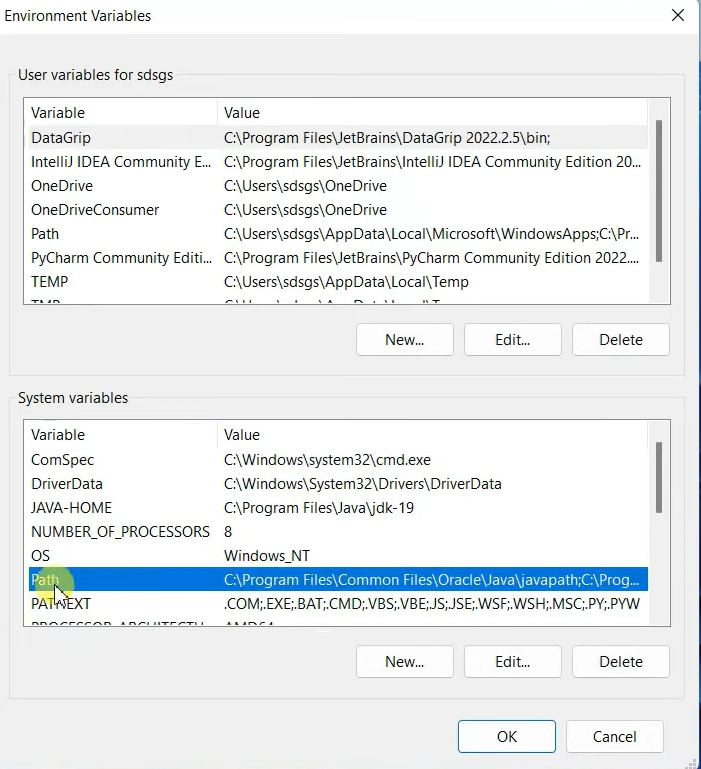
- In the Edit Environment Variable window, click "New" and add the path to the MinGW bin directory. By default, it is typically located at "C:\MinGW\bin". Click "OK" to save the changes.

Step 4: Verify the Installation:
Open a command prompt or terminal window and type the following command to verify if MinGW is installed correctly:
gcc --version
If the installation was successful, it should display the version information of the GCC compiler.

Step 5: Choose a Text Editor:
Select a text editor suitable for C programming. Some popular choices include Notepad++, Sublime Text, Visual Studio Code, or any other editor of your preference. Download and install your chosen text editor from their respective official websites.
You are now ready to write, compile, and execute C programs on your Windows 10 system! Open your preferred text editor, write your C code, save the file with a .c extension, and then use the MinGW compiler to compile and run your C program.
Note that the process of C language download for Windows 7 is the same as C language download for Windows 10.
C Language Download for Windows 11 or any PC
To download and set up the C language on a Windows 11 computer, follow these steps:
Step 1: Choose a C Compiler:
Select a C compiler that suits your requirements. One popular choice is MinGW, a port of the GNU Compiler Collection (GCC) that provides a collection of tools for C development on Windows systems.
Step 2: Download and Install MinGW:
- Visit the MinGW website and go to the Downloads section. Download the installer for the latest stable release compatible with Windows 11 (32-bit or 64-bit).
- Once the installer is downloaded, run it and follow the on-screen instructions. During the installation process, select the C language components for installation.

Step 3: Configure Environment Variables:
To enable your system to locate the MinGW compiler, add its location to the system's PATH environment variable. Here's how:
- Press the Windows key and search "Environment Variables" in the Start menu. Click on "Edit the system environment variables" to open the System Properties window.
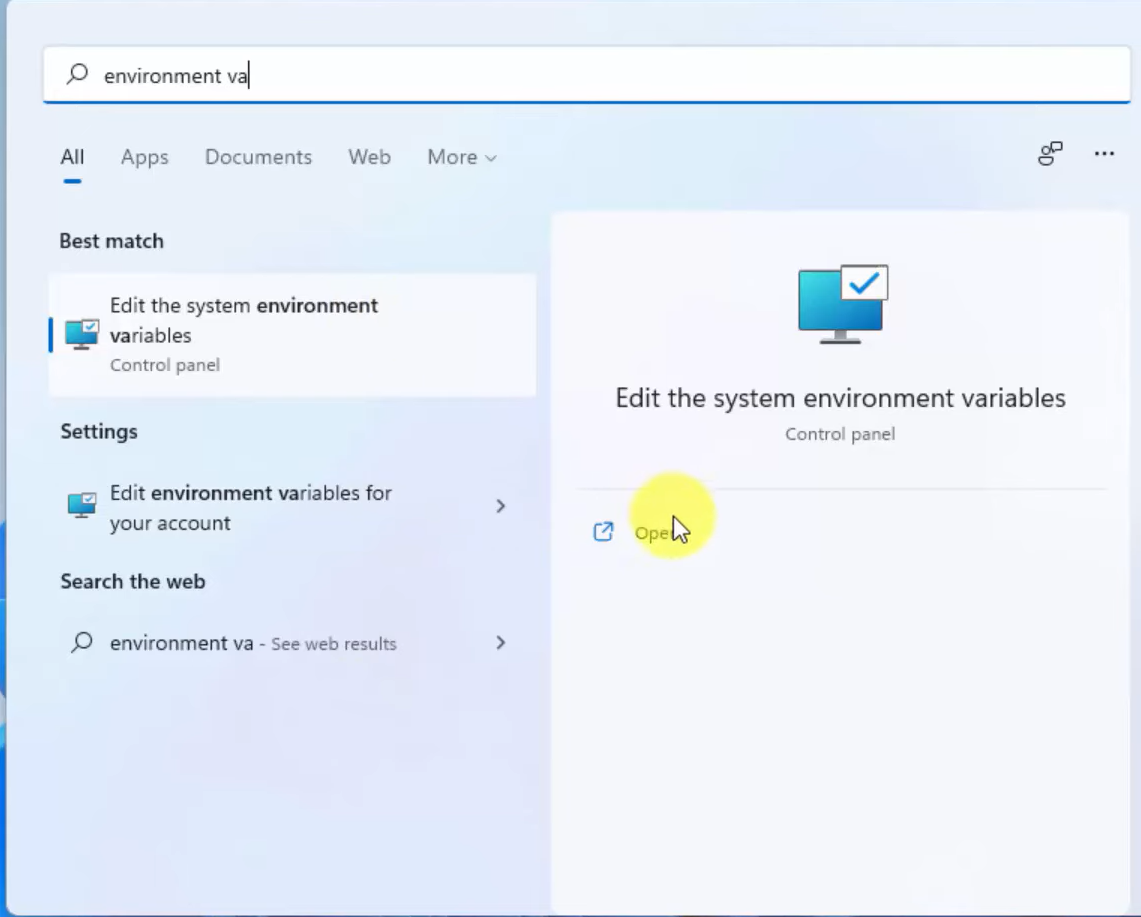
- In the System Properties window, click the "Environment Variables" button.
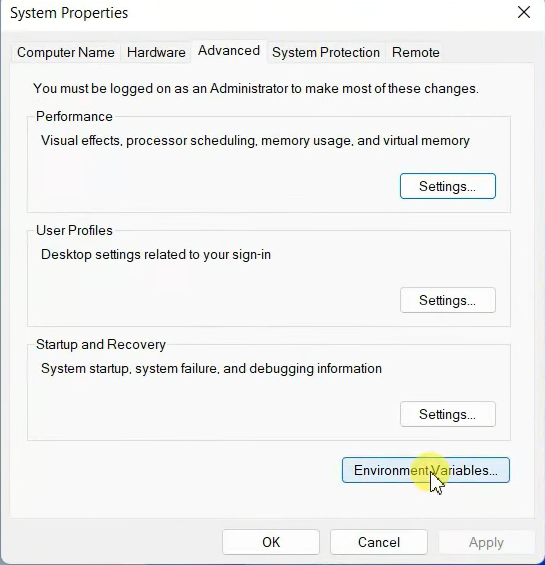
- In the Environment Variables window, scroll down under the "System variables" section and find the "Path" variable. Click on "Edit".
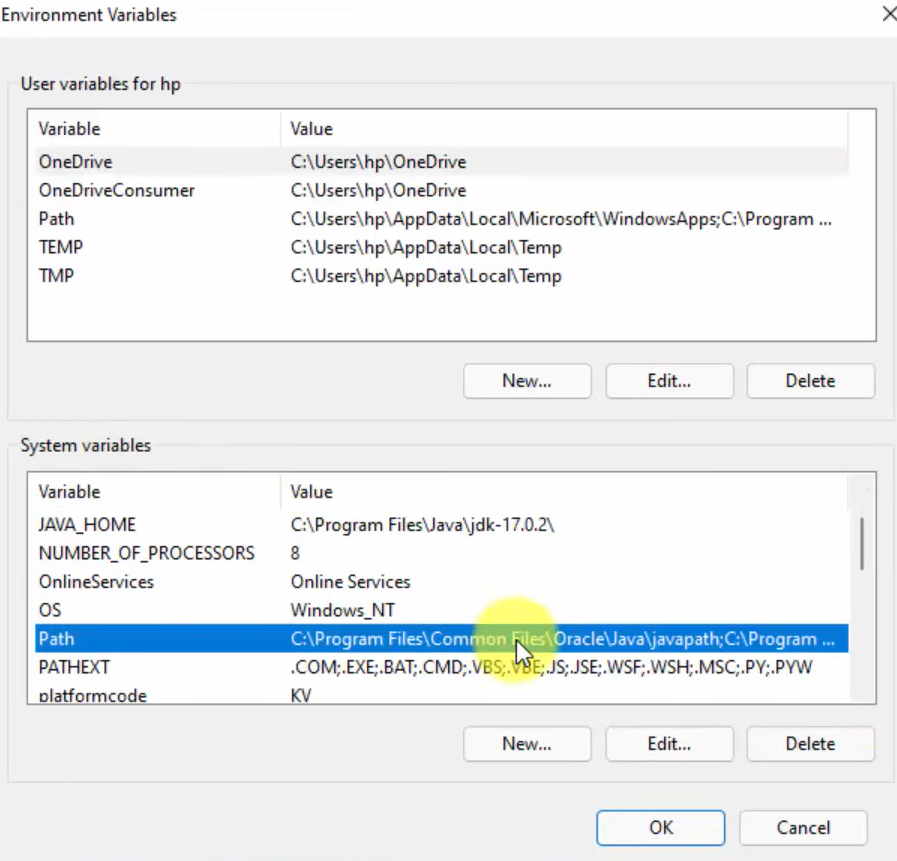
- In the Edit Environment Variable window, click "New" and add the path to the MinGW bin directory. By default, it is typically located at "C:\MinGW\bin". Click "OK" to save the changes.

Step 4: Verify the Installation:
Open a command prompt and type the following command to verify if MinGW is installed correctly:
gcc --version
If the installation was successful, it should display the version information of the GCC compiler.
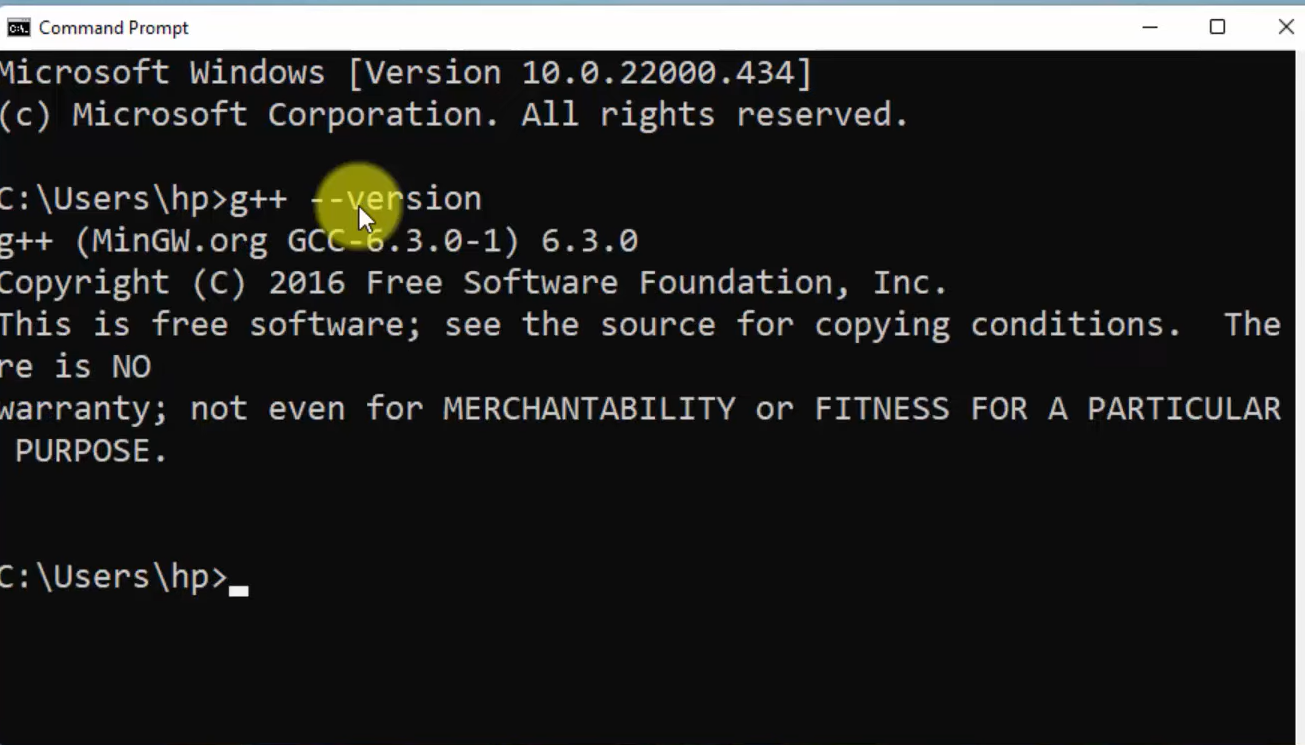
Step 5: Choose a Text Editor:
Select a text editor suitable for C programming on Windows 11. Notepad++, Code::Blocks, Sublime Text, or another preferred editor will work. Download and install your chosen text editor from their official websites.
Explore the Use of C Language article!
Turbo C++ Download
Turbo C++ is an older compiler popular for C and C++ programming. It was primarily designed for DOS and earlier versions of Windows, and its official version is not compatible with modern versions of Windows, such as Windows 10 or 11. However, third-party modifications are available that make Turbo C++ compatible with newer Windows versions.
To download Turbo C++ for Windows:
- Search for "Turbo C++ for Windows" or "Turbo C++ compatible with Windows" in your preferred search engine.

- Look for trusted sources that provide modified versions of Turbo C++ specifically designed for modern Windows versions.
- Visit the website of the trusted source and download the Turbo C++ installer package.
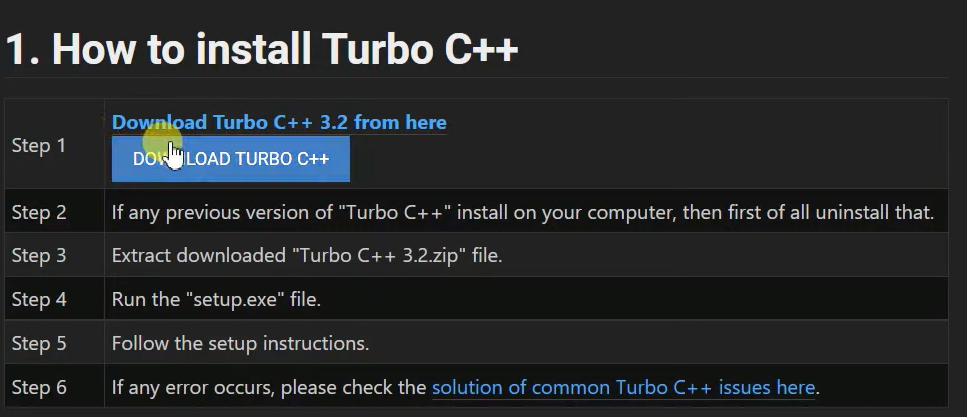
- Run the downloaded installer package and follow the on-screen instructions to install Turbo C++ on your system. Choose an appropriate directory for installation.

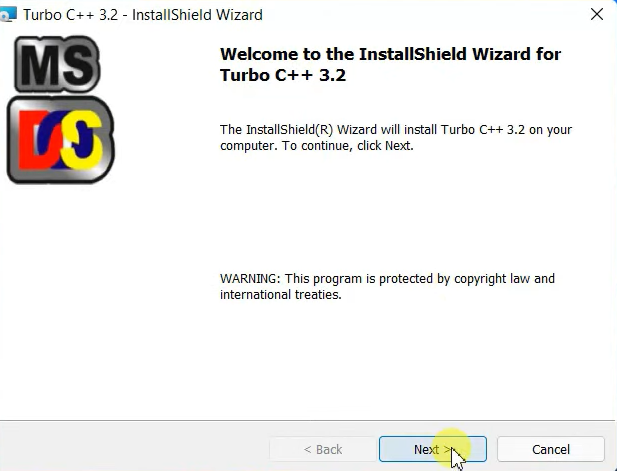
- After the installation, you should be able to launch Turbo C++ from the installed directory.
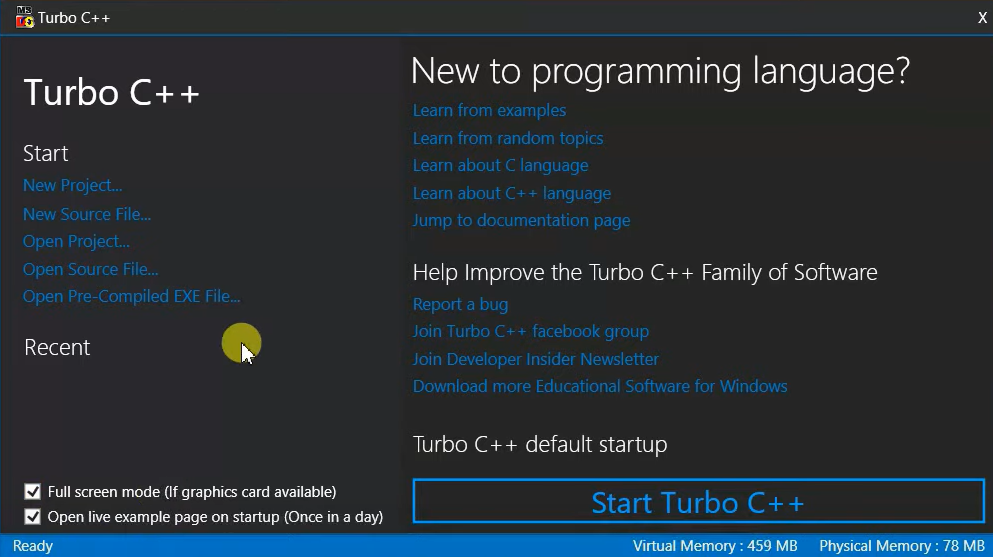
While Turbo C++ can be compatible with newer Windows versions using third-party modifications, it may not fully support all the features and functionalities of modern C and C++ standards. Therefore, it is generally recommended to consider using more modern and supported compilers like MinGW or GCC for better compatibility and access to updated features.
Conclusion
Learning C unlocks your ability to solve real-world problems through code. With the right setup, Windows becomes a powerful platform for C development. From simple arrays to advanced structures, everything begins with the right tools. Get your editor, install your compiler, and dive into the world of C.
For structured learning, upGrad’s Master of Science in Computer Science helps learners refine their skills. It covers C, C++, Java, Python, and more with hands-on projects and expert mentorship.
Kickstart your journey—set up your environment and start building now.
FAQs
1. Which is the best C compiler for Windows?
MinGW with GCC is widely used because it's lightweight, free, and highly compatible with all Windows versions. It’s a perfect choice for most developers.
2. Can I run C programs without installing an IDE?
Yes. You only need a compiler like MinGW and a simple editor such as Notepad++. IDEs are optional but useful for beginners.
3. Is Turbo C++ suitable for Windows 11?
Not directly. Turbo C++ is outdated but runs using modified versions. Still, modern compilers like GCC or Clang are more reliable.
4. Do I need to configure the PATH variable manually?
Yes. It helps your terminal locate the compiler’s executable, which is crucial to compile and run your C programs.
5. What’s the simplest setup for C on Windows?
Install MinGW as the compiler and use Notepad++ for editing. Configure your PATH variable and you're good to go.
6. Can I use Visual Studio Code for C programming?
Absolutely. Install VS Code and the C/C++ extension. You’ll get features like auto-complete, syntax highlighting, and debugging.
7. What if gcc is not recognized after installation?
This usually happens when the PATH variable is misconfigured. Double-check that the C:\MinGW\bin path is set correctly.
8. Are there online C compilers available?
Yes. Use online platforms like Replit, JDoodle, or OnlineGDB to write, compile, and run C code without installing anything.
9. Is it possible to uninstall a C compiler later?
Yes. You can uninstall it like any software—through Control Panel or the Settings app on Windows systems.
10. Can I write and run C code on Mac or Linux?
Definitely. Use gcc or clang via the terminal. Most Unix-like systems support C programming out of the box.
11. What are common errors during setup?
Common issues include missing PATH entries, choosing the wrong architecture (32-bit/64-bit), or skipping installation components.
12. Should I restart my PC after setting PATH?
It’s not always needed, but restarting ensures the system applies environment variable changes across all user sessions.
13. Is C still worth learning today?
Yes. C teaches low-level programming, memory handling, and logic. It’s still widely used in embedded and system-level development.
14. Do I need admin rights to install a compiler?
Yes, especially to modify system PATH variables and install files in protected directories. Admin access simplifies setup.
15. How do I update an outdated C compiler?
Visit the compiler’s official website, download the latest version, and either reinstall or update the existing setup manually.
-9cd0a42cab014b9e8d6d4c4ba3f27ab1.webp&w=3840&q=75)
Take a Free C Programming Quiz
Answer quick questions and assess your C programming knowledge


Author|900 articles published


upGrad Learner Support
Talk to our experts. We are available 7 days a week, 9 AM to 12 AM (midnight)
Indian Nationals
Foreign Nationals
Disclaimer
1.The above statistics depend on various factors and individual results may vary. Past performance is no guarantee of future results.
2.The student assumes full responsibility for all expenses associated with visas, travel, & related costs. upGrad does not provide any a.








